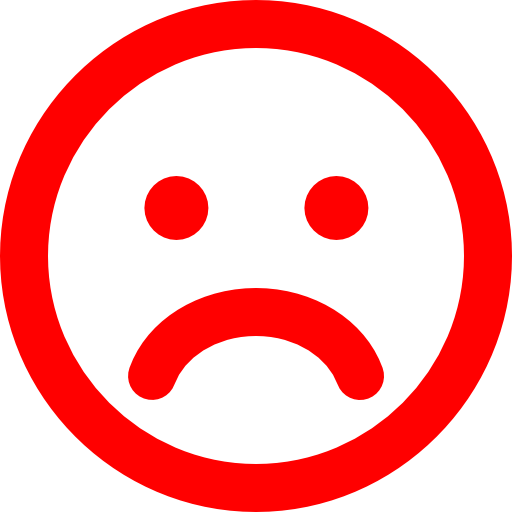1. Key points
The 2022 Census enumerated the population of Argyll and Bute at 85,953. The National Records of Scotland (NRS) more recent mid-year estimates calculated Argyll and Bute’s population to be 87,690 (NRS Mid Year Estimate 2024).
- Argyll and Bute covers a land area of 690,946 hectares and is the second largest local authority by area in Scotland, after Highland (Census 2022).
- Argyll and Bute covers almost 9% of the total Scottish land area (Census 2022).
- Argyll and Bute has the fifth sparsest population of the 32 Scottish local authorities, with an average population density of 13 persons per hectare. This compares to a Scottish average of 71 persons per hectare (NRS 2024 -based Mid Year Estimates).
- The largest settlement in Argyll and Bute is Helensburgh, with a population of 15,160 (NRS's 2020-based Settlement Estimates).
- Argyll and Bute has 42,610 number of households. (NRS Estimates of household and dwellings in Scotland, 2023).
- 47.2% of Argyll and Bute’s population live in areas classified by the Scottish Government as ‘rural’ (Scottish Government 6-fold Urban-Rural Classification 2020).
- 43% of Argyll and Bute’s population live in areas classified as ‘remote rural’; 4.2% live in areas classified as ‘accessible rural’.
- Almost 80% of Argyll and Bute’s population live within 1 km of the coast. Approximately 97% of Argyll and Bute’s population live between 0 and 10km of the coast (Scottish Coastal Forum 2002).
- According to the 2022 Census, approximately 17.5% of Argyll and Bute’s population live on islands (15,055 people ).
2. Introduction
There are a number of ways in which we can think about the geography of our area. This page looks at a number of these, and how they relate to population patterns across and within the Council area.
3. Administrative areas
The Council area is divided up into four Administrative Areas, which are frequently used for service planning within the area. These are
- Bute and Cowal
- Helensburgh and Lomond
- Mid-Argyll, Kintyre and the Islands
- Oban, Lorn and the Isles
Table 1: Population by Administrative Area
| Area | Population (NRS 2022 Census ) |
|---|---|
| Bute and Cowal | 20,437 |
| Helensburgh and Lomond | 24,378 |
| Mid-Argyll, Kintyre and the Islands | 20,564 |
| Oban, Lorn and the Isles | 20,574 |
| Total | 85,953 |
(Source: NRS 2022 Census)
4. Islands
There are 28 inhabited islands in Argyll and Bute (2022 Census). These include: Bute, Coll, Colonsay, Easdale, Eilean Buidhe, Eilean dà Mhèinn, Eilean Loain, Eriska, Erraid, Gometra, Inchtavannach, Innis Chonain, Iona, Islay, Isle of Danna, Isle of Gigha, Isle of Mull, Jura, Kerrera, Lismore, Luing, Oronsay, Rubha Fiola, Rubha nan Gall, Seil, Shuna, Tiree, and Ulva. (See table 2.)
Argyll and Bute’s inhabited islands had, at the time of the 2022 Census, a total population of 15,055. This equated to 17.5% of the total population for Argyll and Bute.
Table 2: Population and households by island (2022 Census figures)
Please note: islands with smaller populations have been omitted under the General Data Protection Regulation (GDPR). na - not available for disclosure. Please note, the total islands population includes redacted figures for smaller islands and therefore will be different from totalling the numbers quoted for individual islands here.
| Island | Population | Households |
|---|---|---|
| Bute | 6,047 | 3,328 |
| Coll | 176 | 99 |
| Colonsay | 117 | 59 |
| Danna | na | na |
| Davaar | - | - |
| Easdale | 61 | 31 |
| Eilean Buidhe | na | na |
| Eilean Loain | na | na |
| Eilean da Mheinn | na | na |
| Eriska | na | na |
| Erraid | na | na |
| Gigha | 187 | 84 |
| Gometra | na | na |
| Inchtavannach | na | na |
| Innischonan | na | na |
| Iona | 178 | 84 |
| Islay | 3,180 | 1,570 |
| Jura | 258 | 124 |
| Kerrera | 61 | 21 |
| Lismore | 190 | 91 |
| Luing | 178 | 110 |
| Lunga (Luing) | - | - |
| Mull | 3,063 | 1,441 |
| Oronsay | na | na |
| Rubha Fiola | na | na |
| Rubha nan Gall | na | na |
| Sanda | - | - |
| Seil | 580 | 279 |
| Shuna (Luing) | na | na |
| Tiree | 700 | 322 |
| Ulva | na | na |
| Total | 15,055 | 7,688 |
| (Source: Census 2022) |
5. Urban and rural populations
The Scottish Government’s 6-Fold Urban Rural Classification (2016) classifies the whole of Scotland into the following categories:
- Large Urban Areas: settlements of over 125,000 people
- Other urban areas: settlements of 10,000 to 125,000 people
- Accessible small towns: settlements of between 3,000 and 10,000 people and within 30 minutes drive time of a settlement of 10,000 or more
- Remote small towns: settlements of between 3,000 and 10,000 people and with a drive time of over 30 minutes to a settlement of 10,000 or more
- Accessible rural: settlements of less than 3,000 people (or areas with no settlements) and within 30 minutes drive of a settlement of 10,000 or more
- Remote rural: settlements of less than 3,000 people (or areas with no settlements) and with a drive time of over 30 minutes to a settlement of 10,000 or more.
Table 4 shows how the population of Argyll and Bute is distributed between the categories used in the Urban-Rural classification. Over half Argyll and Bute’s population lives in areas identified as being ‘rural’. In turn, ‘rural’ areas account for over 99% of Argyll and Bute’s total land area.
Table 3: Population living in the six categories of the Scottish Government's 6-Fold Urban Rural Classification
| 6-Fold Urban-Rural Classification | Percentage total population |
|---|---|
| 1. Large urban areas | 0.0 |
| 2. Other urban areas | 17.9 |
| 3. Accessible small towns | 4.2 |
| 4. Remote small towns | 30.6 |
| 5. Accessible rural | 4.2 |
| 6. Remote rural | 43.0 |
| Total | 100.0 |
(Source: Scottish Government Urban Rural Classification 2016.)
6 Settlements
Different organisations define settlements in different ways. The NRS defines a settlement as a ‘contiguous group of high density postcodes with a population of 500 or more’ . According to this definition, Argyll and Bute has 20 settlements (see table 4).
Table 4: Settlement populations
| Settlement | Population (2020-based Settlement Estimates) |
|---|---|
| Ardrishaig | 1,220 |
| Bowmore | 710 |
| Campbeltown | 4,500 |
| Cardross | 2,070 |
| Dunbeg | 720 |
| Dunoon, Settlement of | 8,980 |
| Garelochhead | 3,650 |
| Helensburgh, Settlement of | 15,160 |
| Innellan | 1,140 |
| Inveraray | 570 |
| Kilcreggan | 1,280 |
| Lochgilphead | 2,280 |
| Oban | 8,140 |
| Port Bannatyne | 1,090 |
| Port Ellen | 810 |
| Rosneath | 1,260 |
| Rothesay | 4,310 |
| Tarbert | 1,120 |
| Tighnabruaich | 550 |
| Tobermory | 1,000 |
| (Source: NRS Mid 2020 Population Estimates for Settlements) |
By comparison, Argyll and Bute Council’s Development Plan suggests that six dwellings is the minimum number of units that comprise a ‘minor settlement’. On the basis of this definition, there are some 215 to 220 settlements within the local authority area. Approximately 83% of the area’s population live in, and 17% live outwith, these settlements. Almost a quarter of the area’s population live in settlements of less than 1,000 people or outwith a settlement entirely.
Data verified: October 2024


